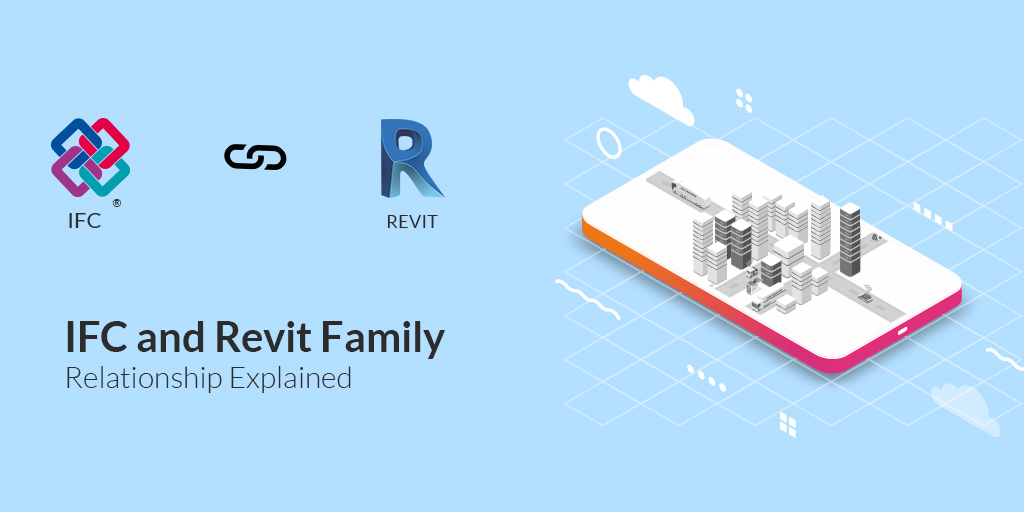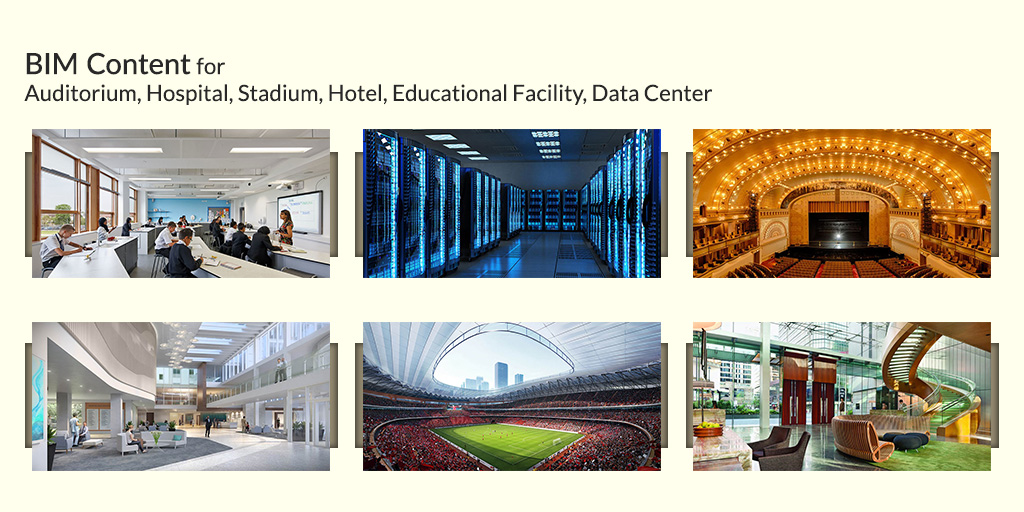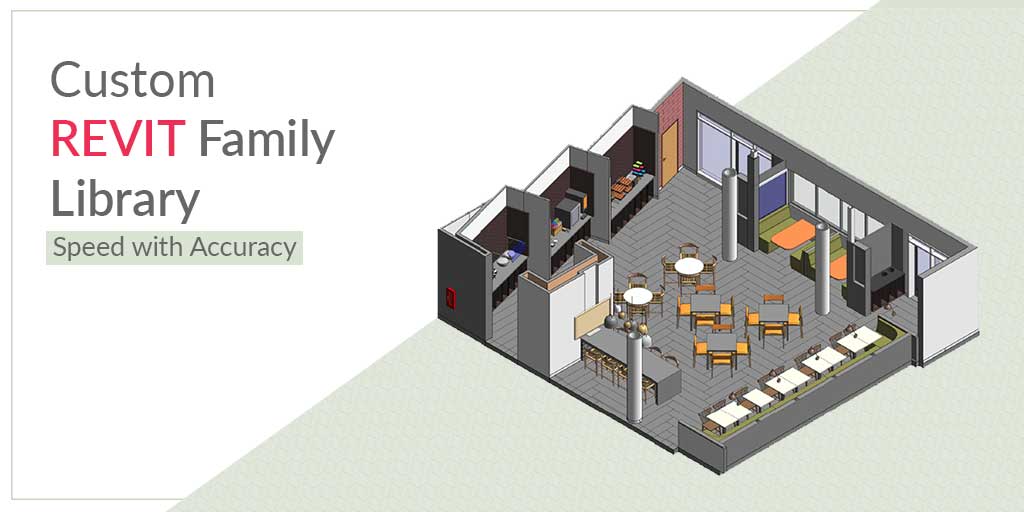Last updated on: January 2, 2025
Jeff Hanson, Sr. Subject Matter Expert, Autodesk in his blog titled “Your guide to understanding Revit Families” states that Revit families are at the core of Revit, creating Revit Family is same as writing DNA code for an element and quoting further “Simply: the family contains the DNA of how to make an element in Revit, and when you author Revit families, you are writing the DNA code for an element. The family describes the basic geometry of the element, the behavior/relationships of the geometry, and defines the element’s parameters.”
At United-BIM, we can import an IFC file from Revit as well as export an IFC in Revit and create a Revit family. The IFC files may be exported and exchanged between software products using .IFC, .ifcXML and .ifcZIP file formats.”
When working with a BIM authoring software platform such as Autodesk’s Revit, Navisworks, ArchiCAD, AllPlan, AECOsim, Tekla BIMSight, Bentley’s MicroStation, one of the major requirements is to ensure maximum freedom for sharing data relating to the design model and, above all, being able to work in an open system.
When many AEC industry professionals (Architects, Mechanical Engineers, Electrical Engineers, Plumbing Engineers, Structural Engineers, etc.) are working on one project and if they all use different native formats then how will the industry professionals collaborate while exchanging models? How do they choose which file format has all the information which doesn’t? How do they make models from one program communicate with models from another?
Proprietary file formats are those that can only be read by the software it was created in and by other authorized software, whereas open file formats can be read and edited by anyone working on the project. The IFC – Industry Foundation Classes format has been created to meet these gaps, it is an open file format that allows the interchange of an information model, without loss or distortion of data and/or information.
In this blog, we’ll shed some light on Industry Foundation Class (IFC), which generally refers to a data model in the AEC industry.

Don’t have the time to read the whole blog, no worries you can download it and read it at your convenient time.
Decrypting IFC: What are Industry Foundation Classes (IFC)?
The Industry Foundation Classes (IFC) are an open standard for the interoperability of building data models used in building design and construction projects across different softwares. The IFC model specification is open and registered by ISO as an International Standard ISO 16739-1:2018, more details can be found at https://en.wikipedia.org/wiki/Industry_Foundation_Classes
IFC is used to exchange information within a project team and between software applications that are used in design, procurement, construction, maintenance, and operation. IFC Model View Definitions primarily support property data and 3D geometry and provides a set of definitions for all object element types encountered in the building industry.
Please note: IFC acronym is also used for “Issued for Construction” which should not be confused with IFC – Industry Foundation Classes
How is IFC used?
Today, IFC is typically used to exchange information from one project participants to another for a smooth transaction of data in the model. For example, an architect may provide an owner with a model of new facility design, an owner may send that building model to a contractor to request a bid, and a contractor may provide the owner with an as-built model with details describing installed equipment and manufacturer information.
The desired IFC data can be encoded in various formats, such as XML, JSON, and STEP, and transmitted over web services, imported/exported in files, or managed in centralized or linked databases.
The CAD/BIM authoring software platform providers will provide interfaces along with model authoring, design, simulation and analysis, viewing and more to end-users to export, import, and transmit data in the IFC format. It is up to users to decide what they want to share from their tools via IFC. A recommended practice is to use BuildingSMART certified platform for IFC data exchange.
Constituents of an IFC File
An IFC model file consists of important information about the project geometry along with other required details. It is very easy to check what’s included in the Building Information Model vis-à-vis IFC using an IFC viewer. The following information is available in an IFC file:
- Geometry, shapes, and connections between various objects
- Thermal calculation property values
- Structural calculation property values
- Quantities required for cost estimation
- Environmental impact properties
Importing and Exporting IFC from Revit
BuildingSMART International has mentioned a list of specifications and has defined a certification process to guarantee that the correct processes for importing and exporting IFC data are followed, ensuring compliance with the standards. All IFC certified programs are capable of reading, writing and exchanging information with other software solutions according to the data provided by buildingSMART. IFC files may be exported and exchanged between software products using .IFC, .ifcXML and .ifcZIP file formats which are explained at https://technical.buildingsmart.org/standards/ifc/ifc-formats/
Import an IFC file in Revit
When using Revit to open (import) an IFC file, it creates a new model using the default template.
- Click File tab > Open > (IFC).
- In the Open IFC File dialog, navigate to the IFC file to import, and select it.
- If needed, for Files of type, specify the type of file to open: IFC, ifcXML, or ifcZIP. (If you do not want elements to join automatically, clear Auto-Join Elements).
- Click Open.
Please refer to Autodesk University – Open an IFC File for more details.
Export a model as IFC
When choosing the right settings for exporting an IFC file, it is important to first think about what the file is to be used for: Will it be used only for the purposes of coordination, or does it have to be processed using a different editor software?
- Load the IFC mapping file that you want to use to export to IFC.
- Click File tab > Export > Options > IFC options.
- In the Export IFC dialog, for File name, click Browse, and navigate to the target folder for the IFC file.
- Enter a name for the IFC file, and click Save.
- Click Export.
Please refer to Autodesk University – Export a Project to IFC for more details.
Advantages of Using IFC in a project
IFC is a dynamic data schema that structures model data and promotes collaboration among all the project participants.
For the successful completion of a project, different project participants work simultaneously on the same model using their tools and software. Without a standard information-sharing mechanism, sometimes project participants have to enter data in the software, manually or stop collaborating altogether.
In the current era, Common Data Environment (CDE) compliant with IFC makes it easy for all the project participants to share information, transparently. No matter what software a project participants uses, if it’s IFC compliant, then information-sharing and collaboration are simplified.
So, the primary benefit is associated with seamless information sharing. Also, IFC ensures that versioning information doesn’t impact information sharing during the entire life-cycle of a project. For example, the facility managers don’t have to worry about the file version while using new software if the software is compliant with IFC standards. All the software that comply with IFC guidelines will be able to comprehend the information in the model.
Summary
IFC files must conform to IFC standards and be exported from a BuildingSMART certified platform. Usually, IFC file requirements are called out for each of the 3 phases of the design stage of a typical project: design concept phase, design development phase, and construction documents phase. At the conclusion of each design stage phase, a formal delivery of BIM data is required and usually IFC dataset is required as part of the deliverable in the construction document stage.
Autodesk’s Revit provides fully certified IFC import and export based on buildingSMART® IFC data exchange standards and additionally there are apps available from Autodesk App Store.
About the Author

Coordination Manager / VDC Manager at United BIM
With over 10 years of experience in the AEC industry, Akash Patel is a seasoned Coordination Manager and VDC Manager at United BIM. His expertise lies in managing complex MEP-FP coordination projects and leveraging cutting-edge BIM technology to ensure seamless collaboration and precision. Akash is dedicated to delivering high-quality, detailed models that meet the demands of modern construction. He is passionate about optimizing workflows and driving innovation within the BIM field.







